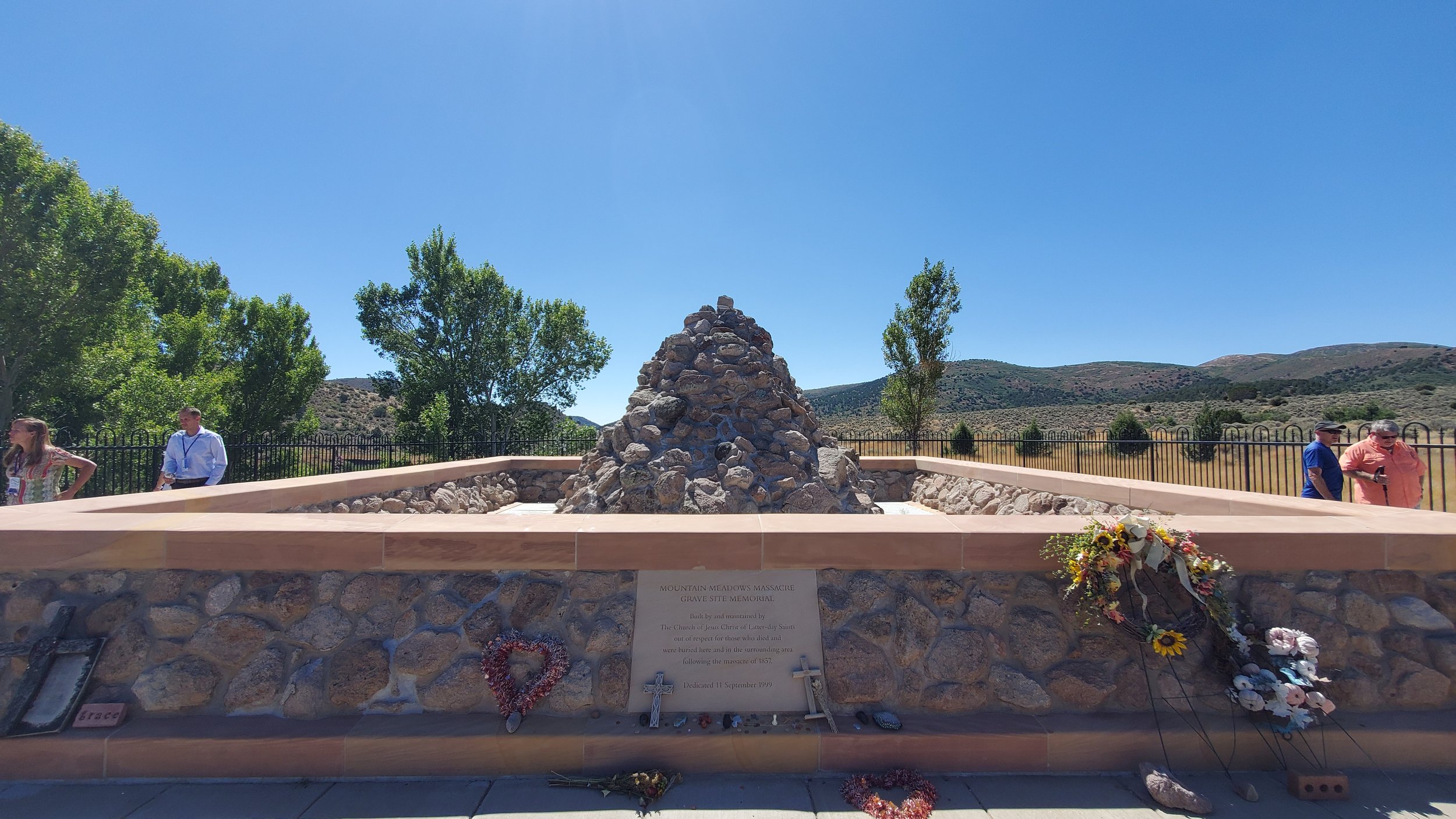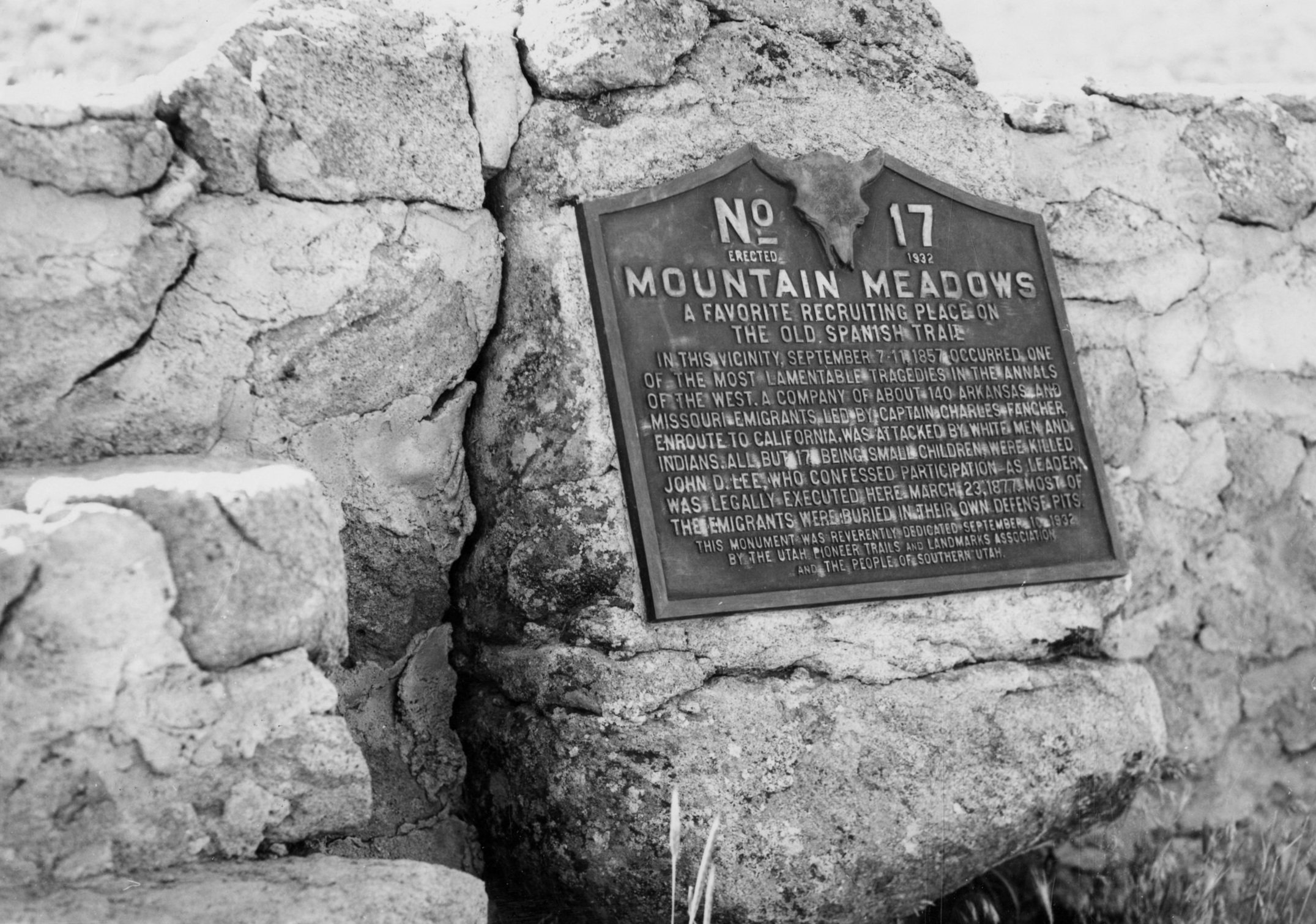
Mountain Meadows Massacre
As you search to learn more about the massacre, search for truth. Juanita Brooks sought and wrote truth to the best of her knowledge. Seek sources that will give facts based on accurate and well researched information.
Please consider these sources in your search:
THE STORY SHE WAS BORN TO TELL
“Born and bred in Utah’s Dixie (Bunkerville, NV), Juanita grew up knowing about what happened at nearby Mountain meadows in the days when her grandfather was young. What she knew, however, was what most Mormons of her generation ‘knew,’ that is, that in 1857 an Indian attack on a wagon train had resulted in an appalling loss of life and that non-Mormons usually blamed the Saints for the massacre of the innocent travelers. She was not aware that most of the older Latter-day Saints in Dixie knew and altogether different version of the story.” Jan Shipps, Forward, Mountain Meadows Massacre 1991 edition.
When she was 20 years old and a grade school teacher in Mesquite she experienced the following: “During the winter, I had made it a point to speak to Old Brother Nephi Johnson at Sunday School and Church; occasionally I sat beside him. I was not disturbed when he came to my room one day just before closing time. The students were all busy in a drawing lesson. ‘Don’t pay any attention to me! Go right on with your work,’ he said as he tapped his way to my desk and sat down in my chair. The children were well-behaved, so things in the room proceeded normally until the bell sounded, when the hurried out, but in good order. I came at once and pulled a chair up facing Brother Johnson. This was what he had been waiting for. Leaning with both hands on his cane, he said impressively, ‘I want you to do some writing for me. My eyes have witnessed things that my tongue has never uttered, and before I die, I want them written down. And I want YOU to do the writing.’ Silly, foolish me! Why didn’t I just reach for a pencil and pad, settle myself and say, ‘Go ahead?’…” That hedging, as she called it, would be one of her life’s greatest regrets. Months later she was called to the Johnson Ranch as Nephi Johnson lay dying. She said, “Brother Johnson…seemed troubled; he rambled in delirium - he prayed, he yelled, he preached, an once again his eyes opened wide to the ceiling and he yelled ‘Blood! BLOOD! BLOOD!’ What is the matter with him I asked, he acts like he is haunted. Uncle List responded, ‘Maybe he is. He was at the Mountain Meadows Massacre, you know.’ No, indeed. I did NOT know….So that was what he wanted me to write! Clearly that was what he meant when he had said his eyes had witnessed things that he tongue had never uttered! Fool, fool that I was, not to have taken the opportunity to write it when he was eager to talk…But I had missed my chance.” Quicksand and Cactus pp 226-229
This began her journey to tell the story.
The Massacre
The Mountain Meadows Massacre (September 7–11, 1857) was a series of attacks during the Utah War that resulted in the mass murder of at least 120 members of the Baker–Fancher wagon train. The massacre occurred in the southern Utah Territory at Mountain Meadows, and was perpetrated by settlers from the Church of Jesus Christ of Latter-day Saints (LDS Church) involved with the Utah Territorial Militia (officially called the Nauvoo Legion) who recruited and were aided by some Southern Paiute Native Americans. The wagon train, made up mostly of immigrant families from Arkansas, was bound for California, traveling on the Old Spanish Trail that passed through the Territory.
After arriving in Salt Lake City, the Baker–Fancher party made their way south along the Mormon Road, eventually stopping to rest at Mountain Meadows. The party's journey occurred amidst hostilities between Mormon settlers and the U.S. government, with war hysteria rampant amongst the Mormons. Acting on rumors of hostile behavior on the part of the travelers, local Mormon militia leaders, including Isaac C. Haight and John D. Lee, made plans to attack them as they camped at the meadow. The leaders of the militia, wanting to give the impression of tribal hostilities, persuaded Southern Paiutes to join with a larger party of militiamen disguised as Native Americans in an attack on the wagon train.
During the militia's first assault, the travelers fought back, and a five-day siege ensued. Eventually, fear spread among the militia's leaders that some immigrants had caught sight of the white men, likely discerning the actual identity of a majority of the attackers. As a result, militia commander William H. Dame ordered his forces to kill the travelers. By this time, the travelers were running low on water and provisions, and allowed some members of the militia – who approached under a white flag – to enter their camp. The militia members assured the immigrants they were protected, and after handing over their weapons, the immigrants were escorted away from their defensive position. After walking a distance from the camp, the militiamen, with the help of auxiliary forces hiding nearby, attacked the travelers. The perpetrators killed all the adults and older children in the group, in the end sparing only seventeen young children ages six and under





